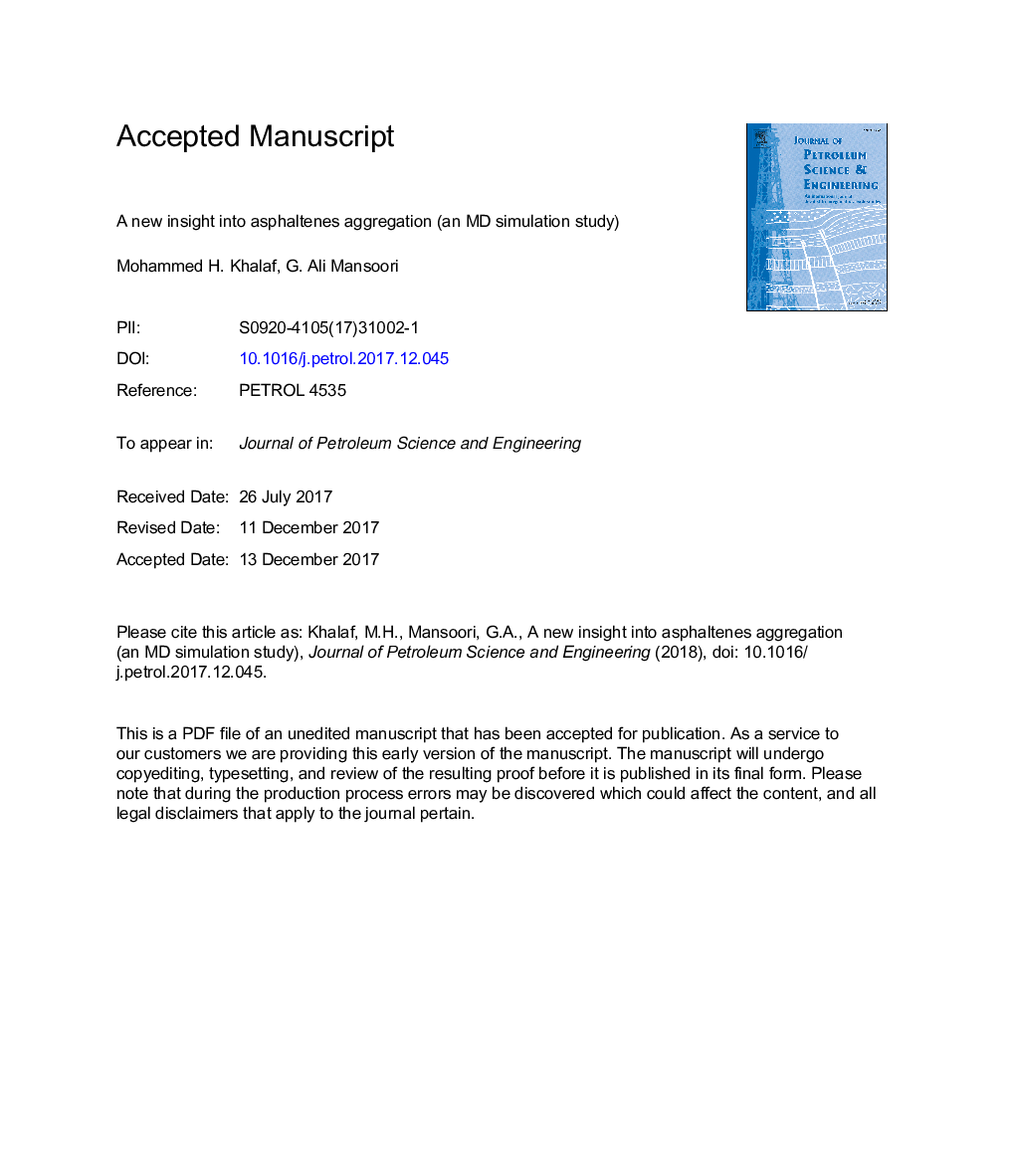| Article ID | Journal | Published Year | Pages | File Type |
|---|---|---|---|---|
| 8125398 | Journal of Petroleum Science and Engineering | 2018 | 18 Pages |
Abstract
The findings reported here is to understand the nature of asphaltenes aggregation behavior at the molecular level in crude oil. Previous studies have been rich with the statistical and macroscopic aspects of heavy organics behavior in petroleum fluids. Molecular dynamics simulations of three different model asphaltene molecules in a "modeled crude oil" composed of n-heptane and o-xylene were conducted. The roles of van der Waals (vdW), hydrogen bond (H-b), and electrostatic (ES) interaction energies on asphaltenes aggregation were investigated. Trends in aggregations, radial distribution functions (RDFs), vdW, H-b, and ES interactions were produced and analyzed. Our studies indicated asphaltenes with different molecular structures behaved differently from one another. At high paraffinic conditions, the preferred stacking of asphaltene molecules was face-to-face. The presence of H-b enhanced the stability of the aggregate. The number of H-bs varied in each model of asphaltene, depending on their detailed structures. The ES interactions between asphaltenes were either attraction or repulsion depending on the molecular structure. Overall, the major factor was the architecture of each asphaltene molecule, such as the number and length of chains, the number and position of heteroatoms, and the number and size of the aromatic cores where they are linked together to represent asphaltene behavior.
Keywords
Related Topics
Physical Sciences and Engineering
Earth and Planetary Sciences
Economic Geology
Authors
Mohammed H. Khalaf, G. Ali Mansoori,
